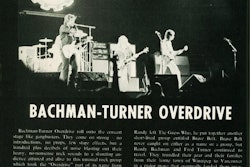Right Side of the Law
It’s important to stay atop the regulation game when running your business
By Max Kvidera
Whether you lease on with a larger carrier or remain independent, you’ll need to stay on top of and understand all of the legal requirements. If you have your own authority or are seeking it, you’ll have to deal with three areas — the authority itself, apportioned license plate and your tax account. To run on your own, you’ll need authority, whether it’s hauling exempt products such as fresh produce or seafood that aren’t regulated by the Federal Motor Carrier Safety Administration and doesn’t require a Motor Carrier number or as a for-hire motor carrier, with an active U.S. Department of Transportation number and Unified Carrier Registration, says Carol Pense of The Permit Connection. Once you get the authority, you can run legally in all 48 continental states.
Depending on where you want to operate, the states covered on the tag for the apportioned license plate will designate where you can run legally.
On the tax side is IFTA, the International Fuel Tax Agreement, that covers fuel tax collection for most states. Three states — Kentucky, New Mexico and New York — supplement IFTA with an extra weight-distance tax based on the number of miles you run in those states. Oregon doesn’t participate in IFTA, imposing instead a tax per trip in the state or issuing a permit to collect taxes later based on mileage over a period of time.
“I have noticed a trend in the last couple of years in increased audits,” says Bernadette Schein, owner of Professional Truckers Consultants. “I’m seeing much bigger emphasis on the trip reports having odometer readings and city and state. Fines have been significant lately.”
Getting legal takes three to four weeks, Pense estimates. “We try to get the authority process started and, in the meantime, get the license applied for, the apportioned tags and the tax accounts,” she says. “When the authority is complete, everything will fall into place.”
Timing varies. The UCR is renewed annually, while the apportioned license will vary according to the state where you’re based. Most states will time the license renewal a year from when you apply. IFTA runs on the calendar year.
Among the weight-distance states, Kentucky issues a non-renewable KYU number that remains active and legal as long as you stay current with registrations and tax filings. New Mexico’s permit is annual on the calendar year and has to be renewed. New York issues permits in a three-year series — the current series expires in 2012.
Once you receive your authority, you must display your company name and DOT number on the outside of the truck.
As the federal Comprehensive Safety Analysis 2010 safety enforcement program gets under way, the DOT is getting stricter on safety. Every new company that applies for a DOT number has to undergo a safety audit. Every driver will have to have a driver qualification file, complete pre-employment drug testing and enroll in a random drug testing pool. Previous driving experience will have to be verified. “This was already in place but will become more important as CSA comes into play,” Pense says.
Log-book transgressions trip up many truckers. Schein says hours-of-service rules are a big area of non-compliance leading to fines, audits and out-of-service violations. She says many operators are confused about how sleeper berth time is calculated.
Pertinent information about hours of service is available at the Federal Motor Carrier Safety Administration website (www.fmcsa.dot.gov), including a summary of HOS regulations. You’re required to keep a copy in your truck. Copies can be ordered online through companies such as J.J. Keller (www.jjkeller.com) and Trans Products (www.transproducts.com) or purchased at large truckstops.
16 Deadly Sins
New motor carriers could lose their authority if they fail any of the following safety regulations, or “deadly sins,” as identified by the Federal Motor Carrier Safety Administration.
1. Failing to implement an alcohol and/or controlled substances testing program.
2. Using a driver known to have an alcohol content of 0.04 or greater to perform a safety-sensitive function.
3. Using a driver who has refused to submit to an alcohol or controlled substances test required under Part 382.
4. Using a driver known to have tested positive for a controlled substance.
5. Failing to implement a random controlled substances and/or alcohol testing program.
6. Knowingly using a driver who does not possess a valid CDL.
7. Knowingly allowing, requiring, permitting or authorizing an employee with a commercial driver’s license which is suspended, revoked or canceled by a state or who is disqualified to operate a commercial motor vehicle.
8. Knowingly allowing, requiring, permitting or authorizing a driver to drive who is disqualified to drive a commercial motor vehicle.
9. Operating a motor vehicle without having in effect the required minimum levels of financial responsibility coverage.
10. Operating a passenger-carrying vehicle without having in effect the required minimum levels of financial responsibility coverage.
11. Knowingly using a disqualified driver.
12. Knowingly using a physically unqualified driver.
13. Failing to require a driver to make a record of duty status.
14. Requiring or permitting the operation of a commercial motor vehicle declared “out-of-service” before repairs are made.
15. Failing to correct out-of-service defects listed by driver in a driver vehicle inspection report before the vehicle is operated again.
16. Using a commercial motor vehicle not periodically inspected.
Neatness Counts
How you fill out your logbook may indicate your approach to trucking and may help you avoid legal trouble.
Bernadette Schein of Professional Truckers Consultants says a sloppy logbook marked with scratch-outs and write-throughs may catch the attention of a state patrolman. It may cause that inspector to take a closer look at your rig and the rest of your record-keeping.
“It speaks to your attitude,” she says about logbook tidiness. “It says are you a good driver or are you in such a rush that you are cutting corners on your paperwork, so where else are you cutting corners? It’s a big portion of the game out there.”
She says that when filling out your logbook take an extra minute, buy a ruler, print instead of scribble, “but make it look presentable.”









